Easter Panettone – Italian Sweet Bread
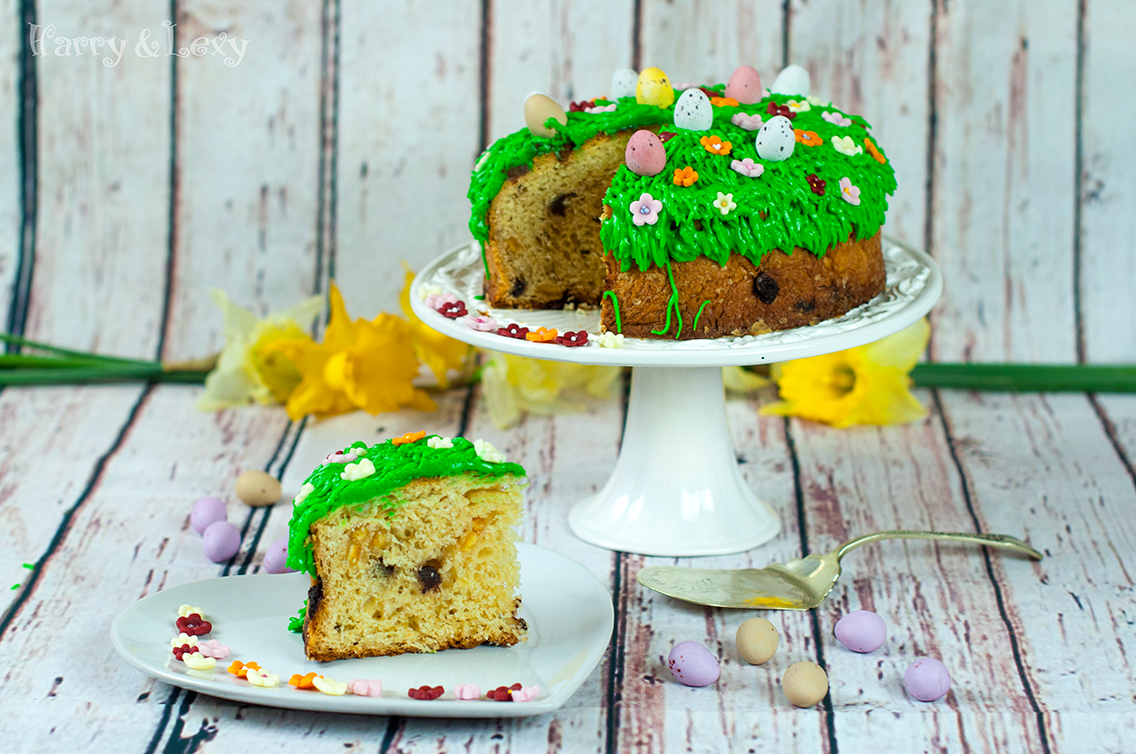
Hey lovelies! Easter is around the corner and we found our stride in the kitchen. We already made three finger-licking-good cupcake recipes with wonderful decorations so we decided it’s time to bake something else. So far we have never made Italian sweet bread Panettone but thought it would be really good for the coming holiday as it reminds us of our traditional Easter cake. The Italians prepare it mainly for Christmas but nowadays you can find it in the shops even for Easter.
Perhaps you’ve noticed that we’re very curious, love digging into old culinary stories, and finding out the origin of delicious recipes. Of course, we also had to check how and where did this Italian dessert appear for the first time. It turned out that this is no easy job at all since no one knows for sure. This is the main reason why there are so many different legends. They’re quite interesting so we decided to share with you the two most popular ones.
The Origin of Panettone
The first one is about the boy who helped in the kitchen…
The story takes place in Milan about 500 years ago in the court of duke Ludovico Sforza. Many people worked in the kitchen and one of them was Tony – a very strong-headed and diligent boy. The Christmas banquet was approaching and everyone in the kitchen was very stressed. In all this panic forgot the dessert in the oven and burned it. And of course, as things go, there was no time to make a new one. Tony came to the rescue at once – he had made a sweet bread from the remaining flour, butter, eggs and dried fruit. The main chef didn’t have a choice and served it to the guests. They were delighted and the duke asked after the name of the dessert. The chef said this was “Tony’s bread” (or “Pan del Toni” which later on became “Panettone”.
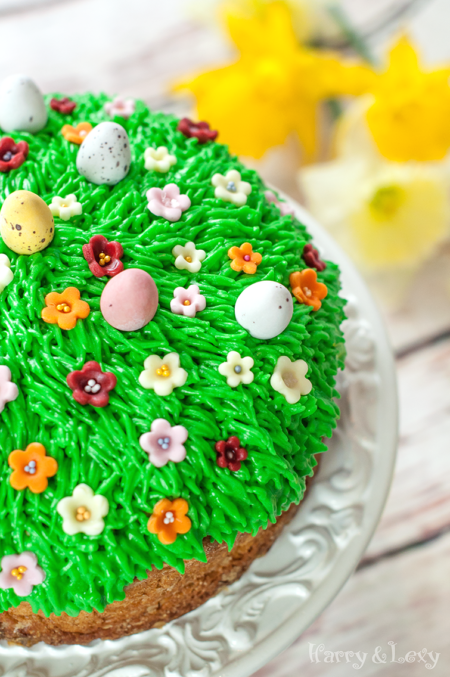
The second legend takes place at the same time, at the same place. One of the bakes in the town was called Tony, and he lived with his daughter Adalissa. A hunter that was also looking after the duke’s hawks, was visiting him often. He loved the baker’s daughter and wanted to marry her but knew that while the bakery wasn’t doing good, there won’t be a wedding. One day, the hunter stole 2 hawks and sold them. With the money he earned, he bought butter and secretly added it to the bread dough during the night. On the next day all the bread sold out. The hunter admitted to Tony what he did and the baker, after seeing how business grew, decided to further improve the recipe and added eggs. When Christmas approached, he started adding raisins as well. Of course, in the end of this story there is also a wedding…
Italian Traditions
These are the most widely spread legends of the Italian Panettone origin and there are many different variations but most likely none of them is true. It is possible that this sweet bread appeared for the first time in the Medieval Ages when the wealthy families in Lombardy started making a more “rich” and festive bread for Christmas. Every family member was receiving a slice of Panettone and another one was kept until the following year as a symbol of the upcoming. Who knows, even today the Italian tradition beckons to have Panettone on 3rd February. This is the day of Saint Biagio who is protecting the people from illness during the winter months, and the festival is known as “blessing of the throat”. There are many different Panettone recipes – with raisins, dried fruit, chocolate chips, pine nuts… We made a classic Panettone, added some candied orange peel, chocolate chips and this beautiful Easter decoration.
Ingredients for Italian Easter Panettone:
- 600 g flour + 1 tblsp sprinkling
- 250 g butter, softened
- 200 g candied orange peel
- 125 g sugar
- 100 g chocolate chips
- 5 eggs
- 40 g fresh yeast
- 4 tblsp milk
- 2 tsp vanilla
- Pinch of salt
Easter Panettone Preparation:
- Gently heat the milk. Dissolve the yeast and 1 tbl sp sugar in it.
- In a bowl, mix the butter, sugar and vanilla until a light and fluffy mixture is obtained. Add in the eggs one by one.
- Sift the flour into a big bowl. Add in the butter mixture, risen yeast and salt. Knead a soft dough.
- Place the dough into a bowl and cover it with cling film. Don’t stretch the cling film alongside the edges of the bowl, just place it directly onto the dough and press it gently to make sure there aren’t any air bubbles left. This will prevent the forming of a dry crust. Leave the dough aside to rise for 2 hours.
- Put the candied orange peel in a bowl. Sprinkle with 1 tablespoon of flour and stir. If the peel is too wet, stir in one more tablespoon of flour. This is done so they will spread evenly in the dough and won’t sink while baking.
- Grease and line the walls and the bottom of a baking tray with baking parchment. You can even lightly sprinkle some flour.
- Place the risen Panettone dough on a working surface and make a little hollow. Put the candied orange peel and chocolate chips inside and knead the dough again so they can spread evenly.
- Place the dough into the baking tray and cover with cling film one more time. Leave it to tise for another hour.
- Put the Easter Panettone in a preheated to 180°С oven and bake for 40-50 minutes. Before taking the sweet bread out, check if it is well baked with a wooden skewer. Leave it to cool in the tray for about 10 minutes, then transfer it onto a cooling rack until completely cool.
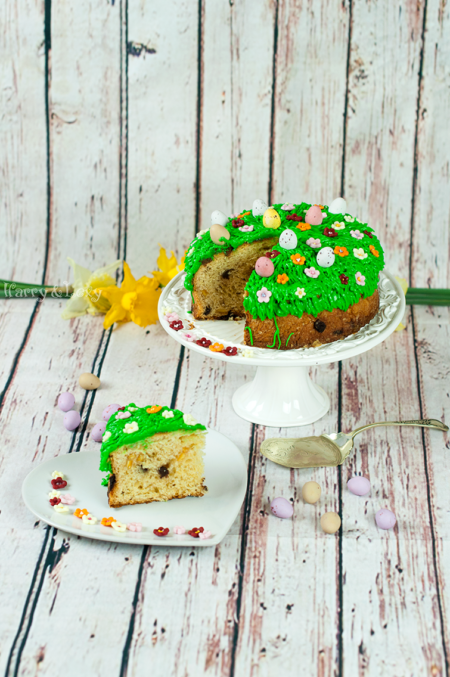
Bon appetit!
Tip: To decorate this Easter Panettone we used classic buttercream coloured in green. We cut out little flowers using fondant plunger cutters and added a few mini Easter eggs. If you don’t have time to decorate the Easter cake or don’t want to make it too sweet, you can just brush the Easter Panettone with egg yolk or whisked egg white with a few lemon juice drops and a bit of icing sugar. You can also add some walnuts or cashews.
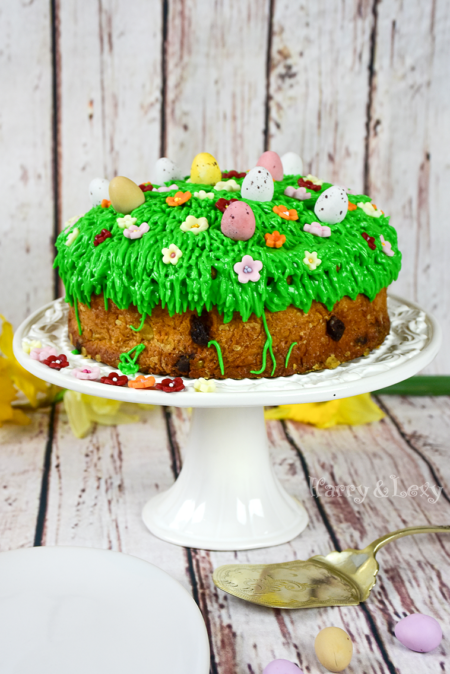
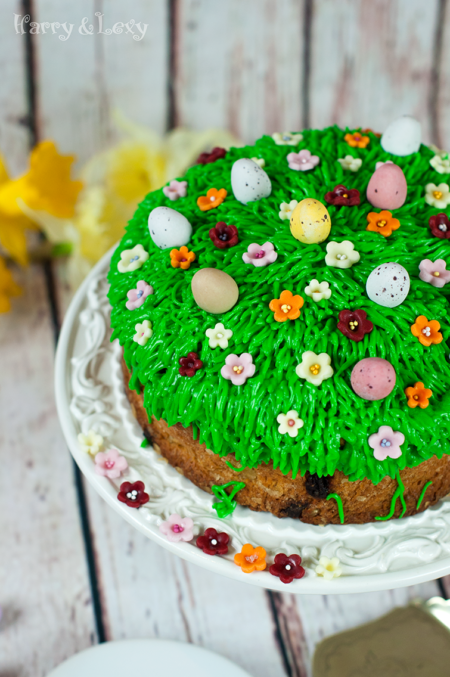



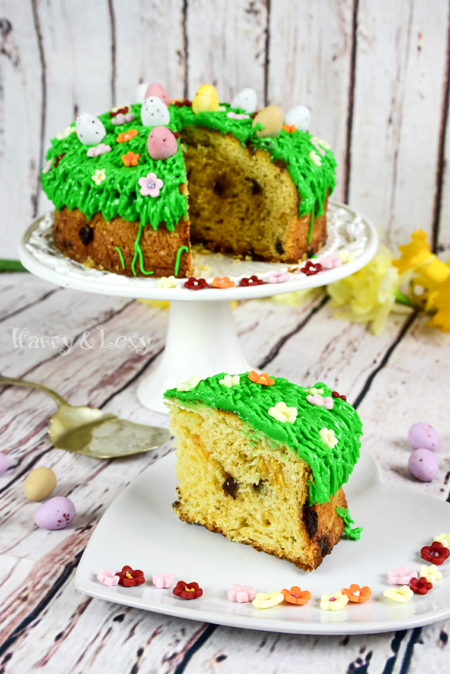




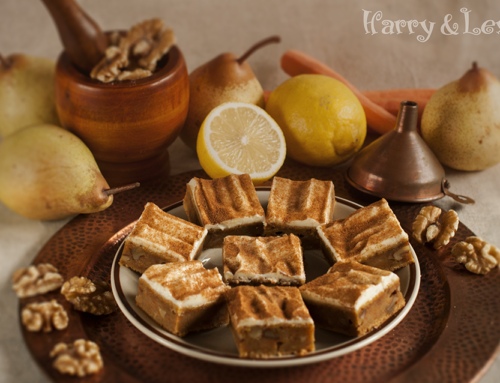
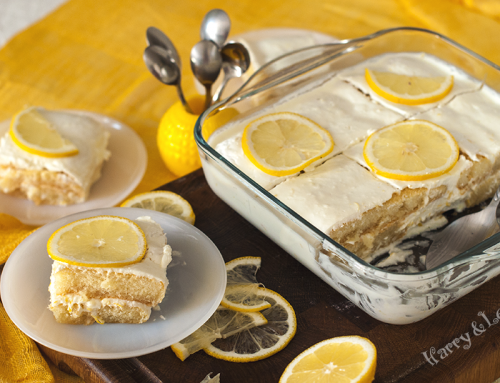

Leave A Comment